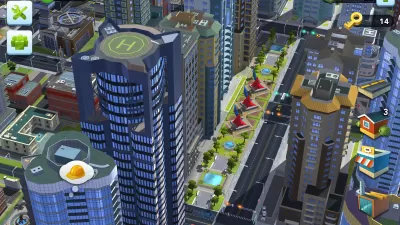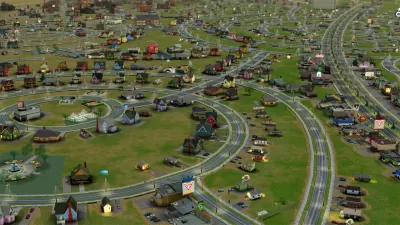Computer simulations continue to play a novel and important role in urban planning, especially in finding new ways to engage the public and add some fun to the process of planning for the future of cities.
Urban planners are using Cities: Skylines to test and showcase planning ideas, according to an article by parCitypatory written in collaboration with Dennis Gastelum.
While noting that the game is indicative of many of the problems with urban planning in the United States, like car-centric infrastructure and development patterns and a tendency to prioritize investments in already wealthy neighborhoods, for example, the article touts the public engagement tools built into the game as a gateway to understanding the critical component of public engagement.
However, there are some interesting elements of the game that allow you to have an interaction between the player and its simulated citizens. There is Chirper, a Twitter-like dialog bar that allows you to know how citizens are feeling about your recent actions, as well as a measurement of general happiness that helps you guide your decisions.
Still, according to the article, the simulated engagement process is no substitute for the real thing, and planners that want to expand the power of the game to inform planning processes will have to bring in real humans to interact with the models provided by the game's simulation. Numerous examples of planners using the game as an engagement tool follow, including the example shown in the video shared above. The following video shows an example of planners in Stockholm using the game as an engagement tool to plan the Norra Djurgardstaden area of the city, with goals for 12,000 homes and 35,000 workspaces.
The article also notes that Cities: Skylines isn't the only game with the potential to supplement public engagement processes: "Similarly, other games such as Fortnite, Minecraft and UrbanFootprint are used in many cities around the world to develop urban planning projects. Even UN Habitat is using Minecraft to change neighbourhood design with the Block by Block project." Don't forget SimCity, too!
FULL STORY: Designing Cities with Computer Games: Simulating Citizen Participation

Trump Administration Could Effectively End Housing Voucher Program
Federal officials are eyeing major cuts to the Section 8 program that helps millions of low-income households pay rent.

Planetizen Federal Action Tracker
A weekly monitor of how Trump’s orders and actions are impacting planners and planning in America.

Ken Jennings Launches Transit Web Series
The Jeopardy champ wants you to ride public transit.

California Invests Additional $5M in Electric School Buses
The state wants to electrify all of its school bus fleets by 2035.

Austin Launches $2M Homelessness Prevention Fund
A new grant program from the city’s Homeless Strategy Office will fund rental assistance and supportive services.

Alabama School Forestry Initiative Brings Trees to Schoolyards
Trees can improve physical and mental health for students and commnity members.
Urban Design for Planners 1: Software Tools
This six-course series explores essential urban design concepts using open source software and equips planners with the tools they need to participate fully in the urban design process.
Planning for Universal Design
Learn the tools for implementing Universal Design in planning regulations.
Ada County Highway District
Clanton & Associates, Inc.
Jessamine County Fiscal Court
Institute for Housing and Urban Development Studies (IHS)
City of Grandview
Harvard GSD Executive Education
Toledo-Lucas County Plan Commissions
Salt Lake City
NYU Wagner Graduate School of Public Service





























